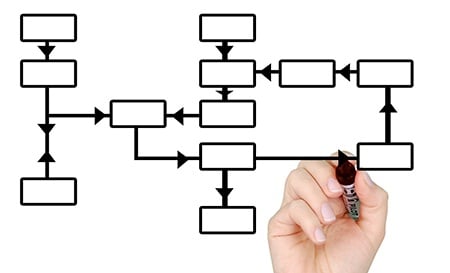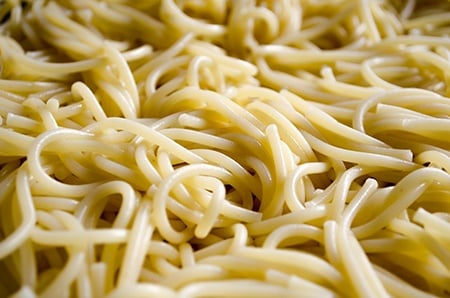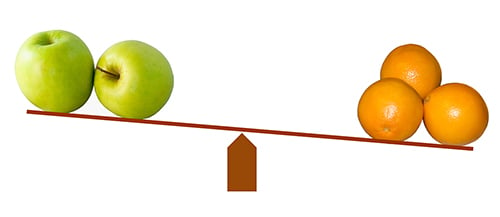
Are you looking for an easy way to understand just how your final class grades become GPA decimals? If so, then you've come to the right article. In just two simple charts, I'll show you how this conversion works for both a weighted and unweighted GPA.
Why Are Grades Converted to a 4.0 Scale?
Typically the grades you get in high school are either letters or percents, but on your transcript that number will be converted into a GPA, or grade-point average.
GPA is a quick, helpful way for a college admissions officers to get a sense of your skills, intelligence, and willingness to challenge yourself. And looking at one number beats having to go through each person's transcript grade by grade, for thousands and thousands of applicants!
Colleges typically use a 4.0 GPA scale so that all GPAs are standardized. Rather than trying to compare a bunch of letter grades, percentages, or different GPA scoring scales, colleges convert all those scores to the 4.0 scale. That makes it easy to accurately compare the grades of students from all over the country and world.
For example, say one student went to a school that uses letter grades on transcripts, another went to a school that uses percentages, and a third uses the 4.0 scale. Comparing, say an A- average to a 93% average to a 3.5 GPA is much more difficult than converting the grades and percentages to the 4.0 scale and having three numbers that are easily comparable.

Going through grades one by one: probably like sorting these noodles in order of length and width.
The Unweighted GPA Conversion Chart
Most high schools will convert all your final grades into a scale ranging from 0.0 to 4.0. This unweighted GPA scale treats your grades the same, no matter whether they come from Standard, Honors, or AP/IB classes. Here's how unweighted grades convert:
| Letter Grade | Percentage | Standard GPA |
| A+ | 97-100 | 4.0 |
| A | 93-96 | 4.0 |
| A- | 90-92 | 3.7 |
| B+ | 87-89 | 3.3 |
| B | 83-86 | 3.0 |
| B- | 80-82 | 2.7 |
| C+ | 77-79 | 2.3 |
| C | 73-76 | 2.0 |
| C- | 70-72 | 1.7 |
| D+ | 67-69 | 1.3 |
| D | 65-66 | 1.0 |
| F | Below 65 | 0.0 |

But my AP apples were way harder than your Honors oranges!
The Weighted GPA Conversion Chart
Many schools also calculate a weighted GPA, ending up with a scale that ranges from 0.0 to 5.0. The weighted GPA tries to account for the fact that different level classes have different degrees of difficulty. The way this scale differentiates between harder and easier classes is by adding .5 to Honors and adding 1 to AP grades. This would mean a B in an AP class is equal to an A in a regular-level class for your GPA. Here's how weighted grades convert:
| Letter Grade | Percentage | Honors GPA | AP/IB GPA |
| A+ | 97-100 | 4.5 | 5.0 |
| A | 93-96 | 4.5 | 5.0 |
| A- | 90-92 | 4.2 | 4.7 |
| B+ | 87-89 | 3.8 | 4.3 |
| B | 83-86 | 3.5 | 4.0 |
| B- | 80-82 | 3.2 | 3.7 |
| C+ | 77-79 | 2.8 | 3.3 |
| C | 73-76 | 2.5 | 3.0 |
| C- | 70-72 | 2.2 | 2.7 |
| D+ | 67-69 | 1.8 | 2.3 |
| D | 65-66 | 1.5 | 2.0 |
| F | Below 65 | 0.0 | 0.0 |

We're just happy weighted GPA doesn't require actual weights.
What's Next?
Ready to use these numbers to calculate your GPA? Check out how to calculate your unweighted GPA and your weighted GPA.
If you're curious whether colleges look at your weighted or unweighted high school GPA, then check out our guide on weight vs. unweighted GPAs.
Worried about what your converted GPA means? We explore what's a good GPA, what's a bad GPA, and what colleges think.
Ready to work, work, work to get that GPA up? We've got four strategies for raising your GPA fast, and how to keep your GPA high over your whole high school career.












